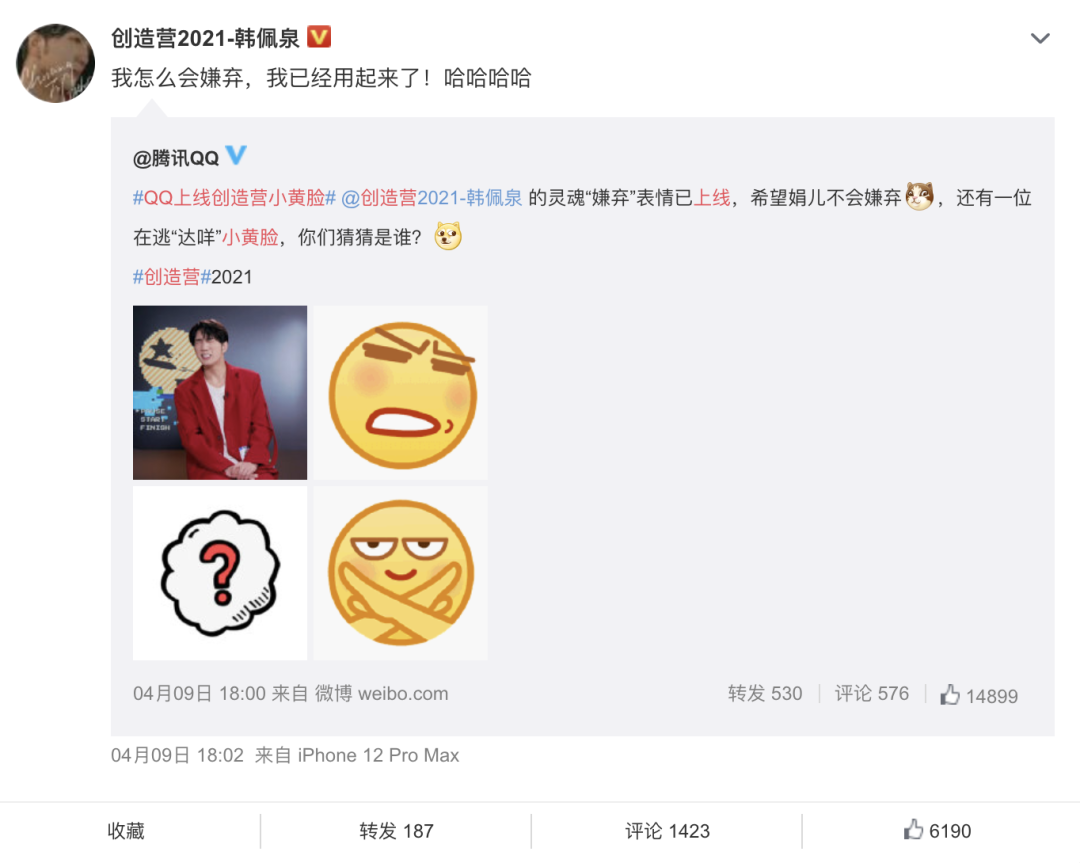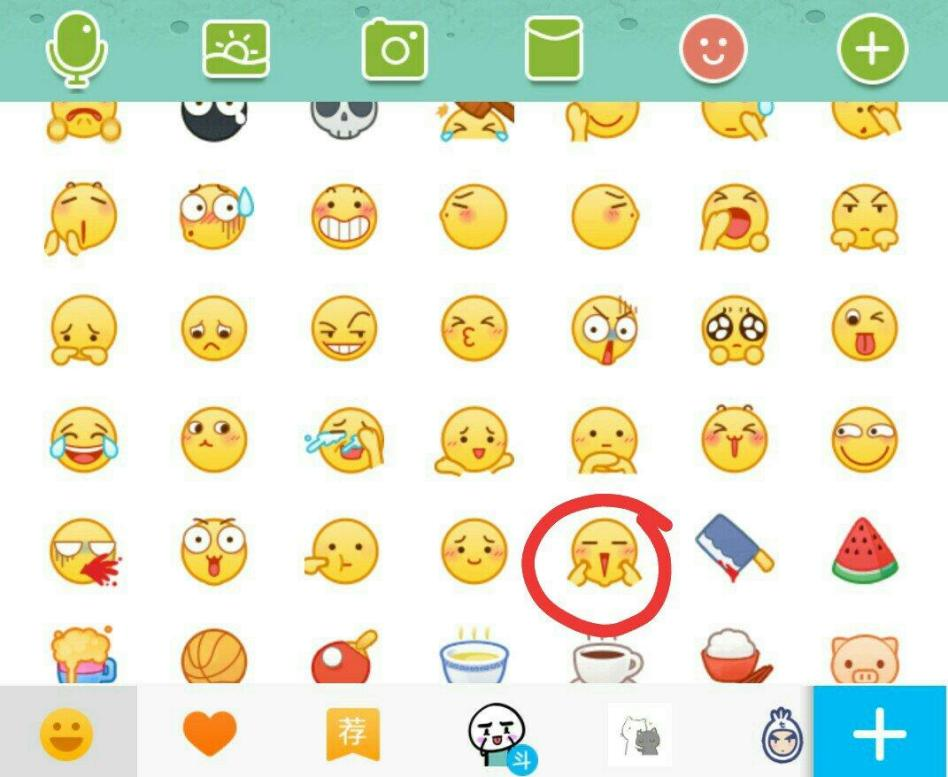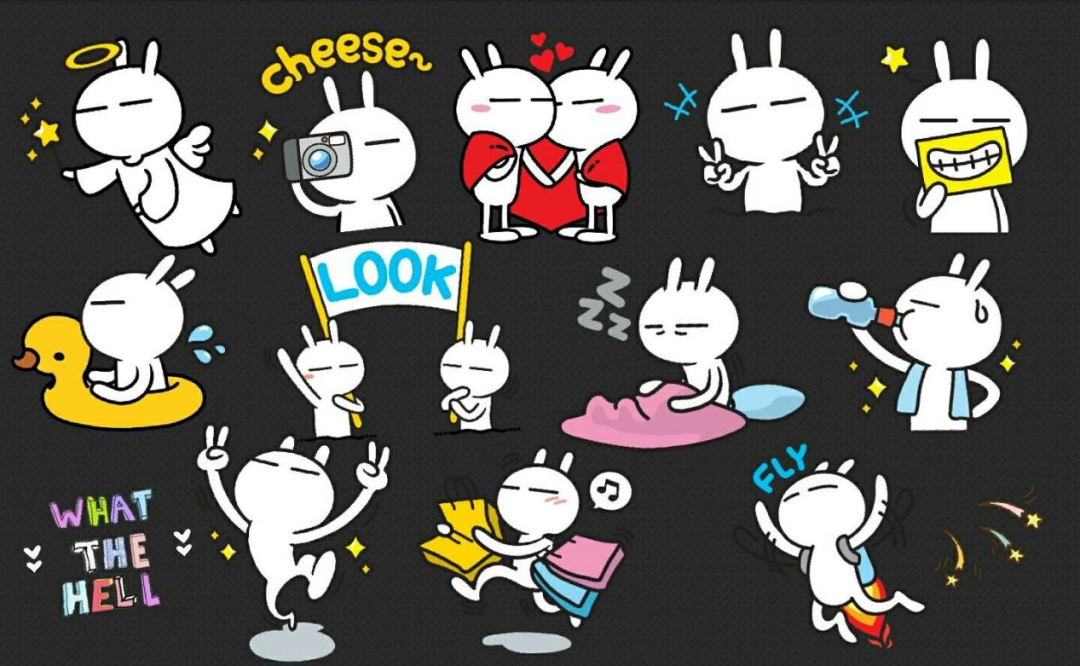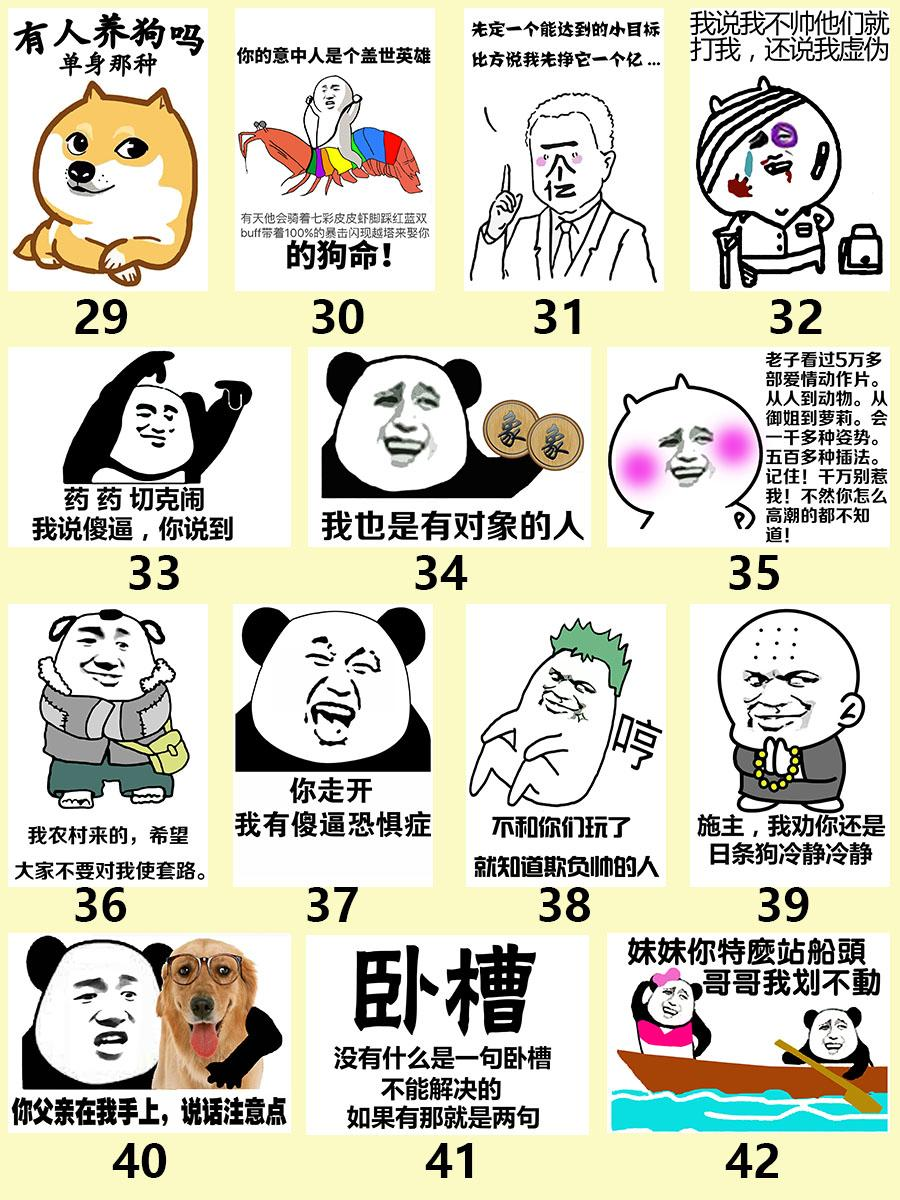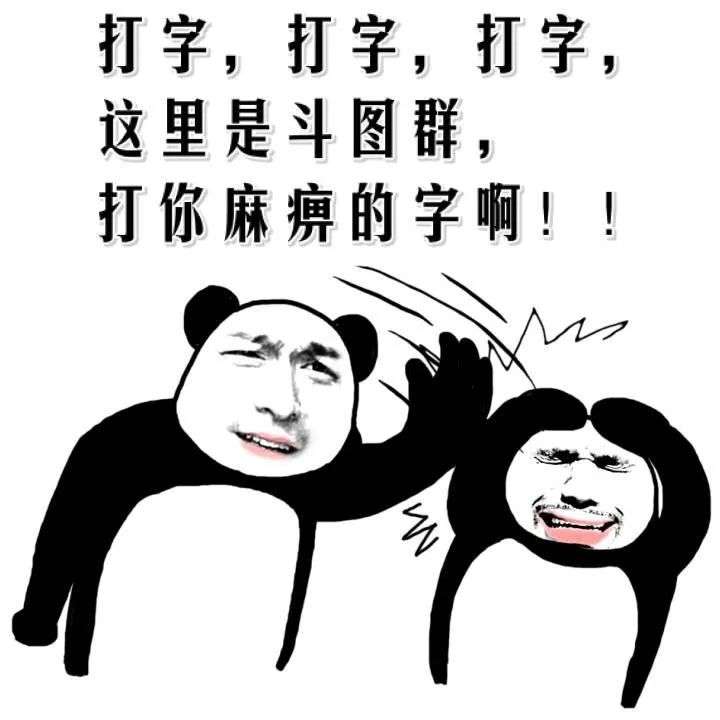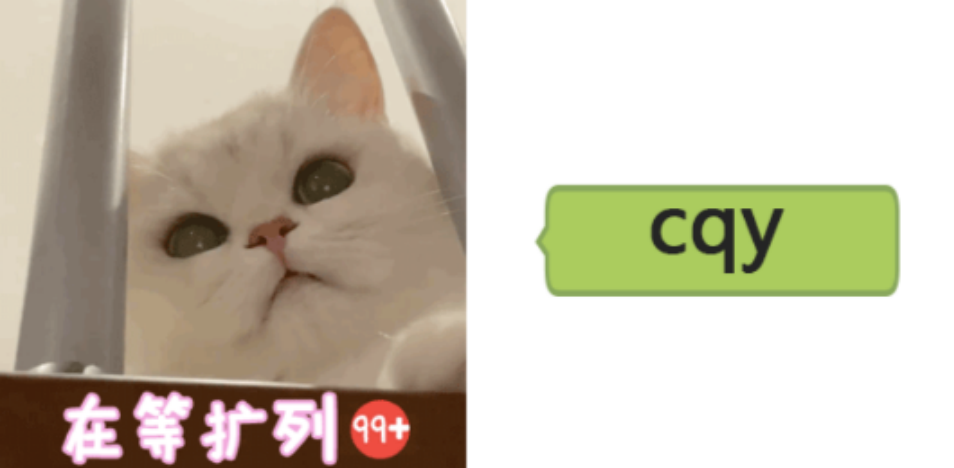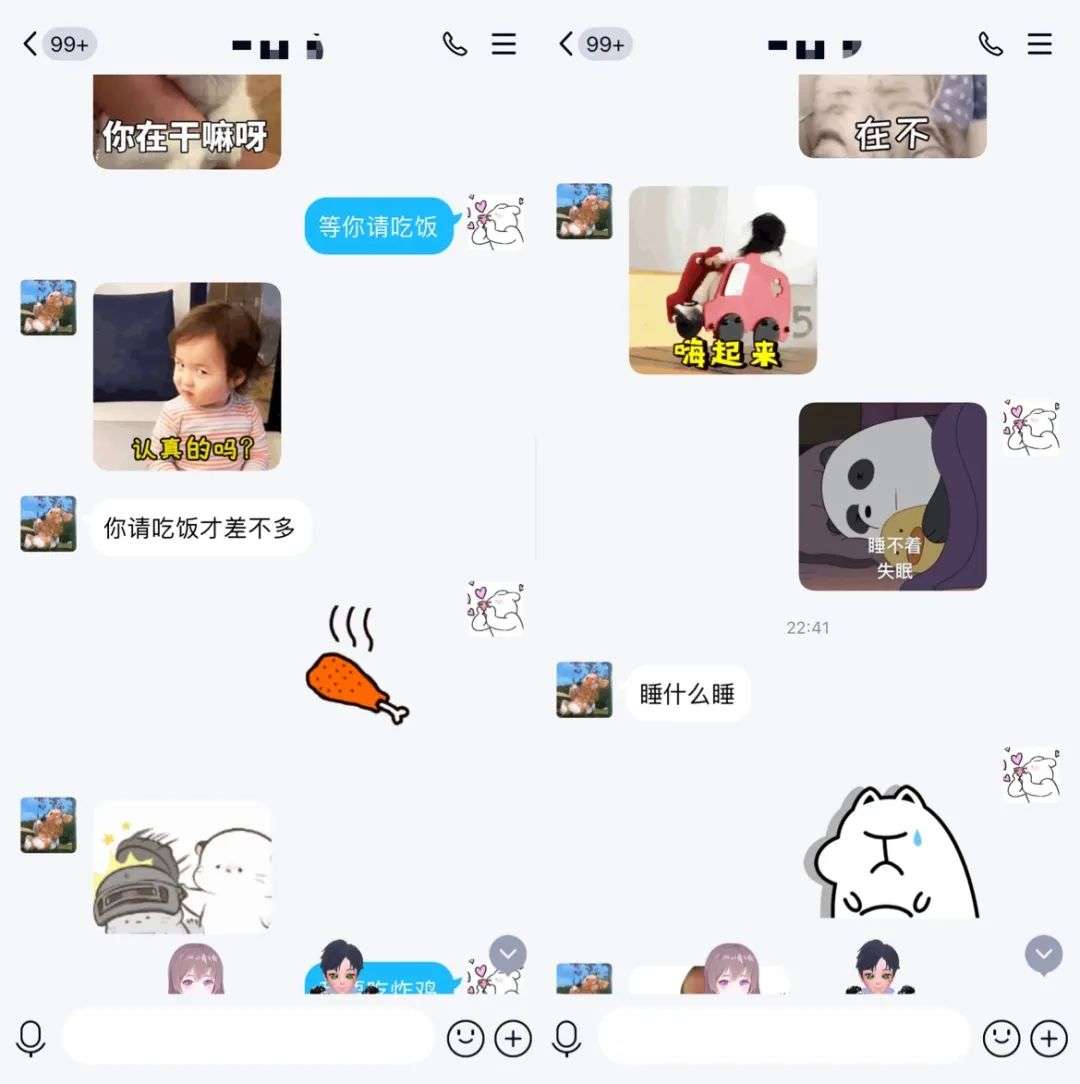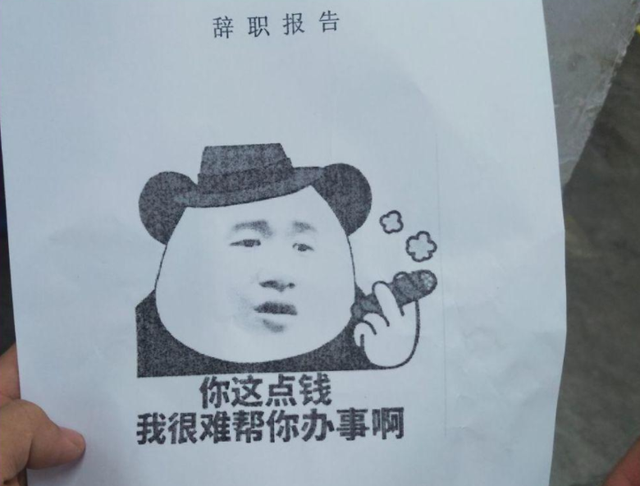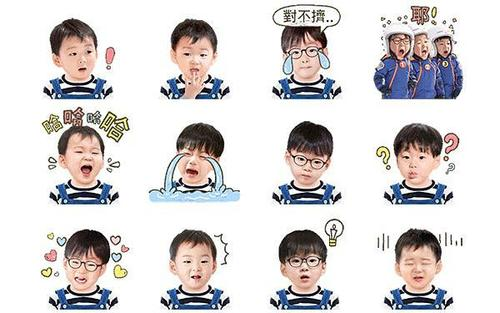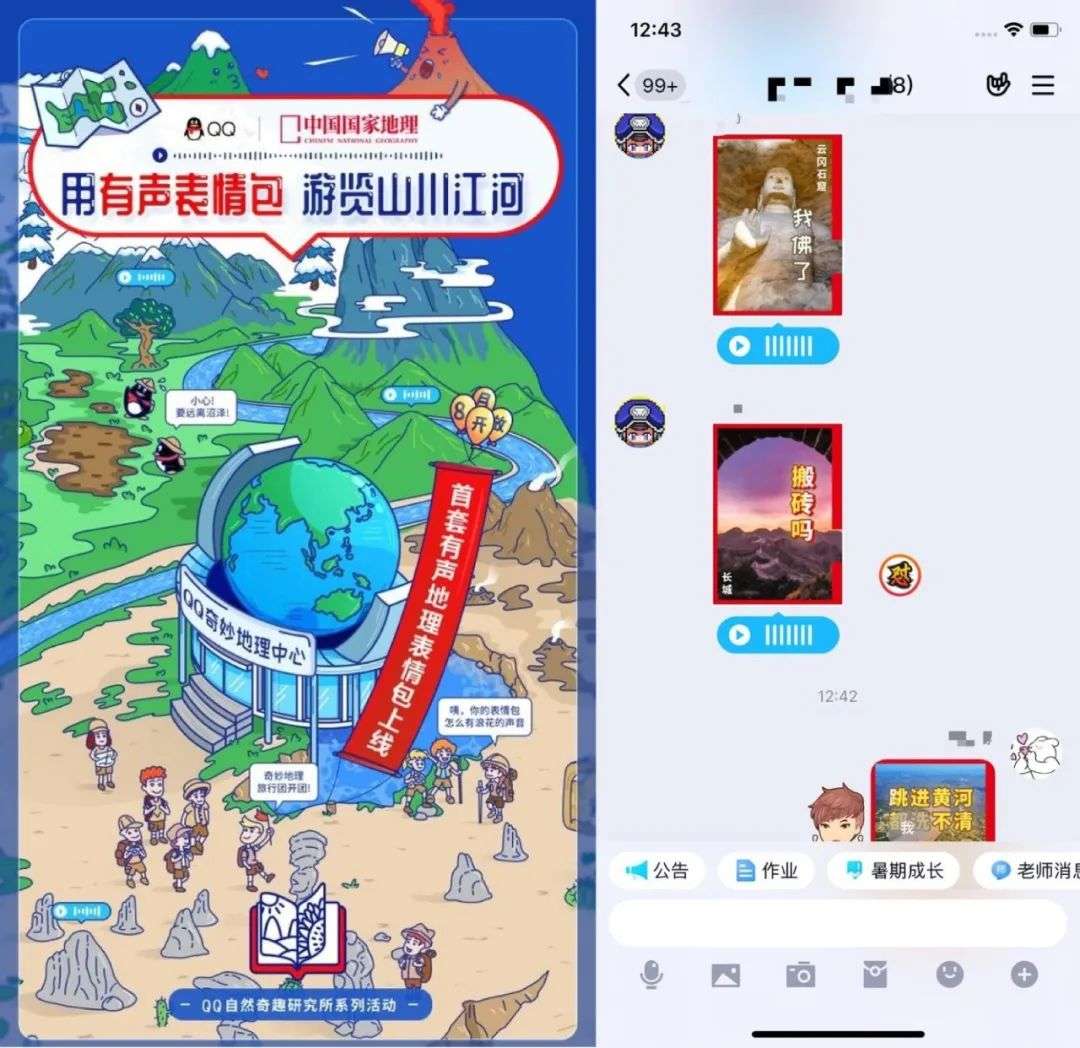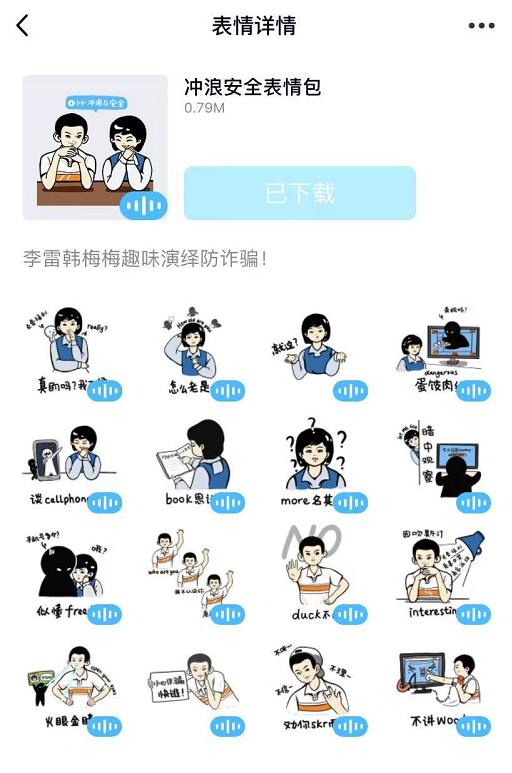Expressionless, no social
Editor’s note: This article from the micro-channel public number “crooked Cn” (ID: daotmt), of: crooked Cn.
“I miss the emoticon that I reluctantly cut before, now you can add and add as much as you want…”
“Now there is no typing at all in chatting, but the essence of sand sculpture can’t be hidden…”
“Juan’er’s disgusting face emoticon is online on QQ? I don’t believe it, unless I add qq…”
The topic of Qianjinzi#QQ上线创营小黄脸# on Weibo has aroused heated discussions among netizens. Han Peiquan, a “human-shaped emoticon package,” the creation camp 2021 contestant, has won the love of many fans for his sharp tongue and vivid expression. The sentence “candy is salty” is popular all over the net. This wave of Han Peiquan’s soul “dislikes” the little yellow face emoticon on QQ has also obtained Han Peiquan’s own real-name authentication.
Actually, as a social product that has been in development for 22 years, QQ has never ceased to gain insights into the preferences of young people. Emoji, as a carrying function for young communication, has been popular on QQ. I remember last year, when QQ added a yellow face emoticon pack, even the designer couldn’t think of it. This new set of emoticons was just launched, and the average number of clicks per emoji exceeded 20 million in a single day, of which the emoji that covered the face was clicked in a single day Nearly 100 million times (how sad everyone is).
Why does the emoticon last forever?
The earliest emoji package can be traced back to 1982.
Professor Scott Falman of Carnegie Mellon University combined the characters in the ASCII code to output on the BBS:-), which is used to represent the facial expression of “smiling”.
Subsequently, Japan created kaomoji in the form of more complex ASCII characters on this basis, using characters to refer to more expressions, such as angry, disdain, and so on. Japanese operator NTT has introduced a new type of pager for this, allowing users to send text messages with emojis such as “love”. Pagers with emojis are very popular, NTT has developed a 12 X 12 pixel emoji, and the first emoji was born.
Apple put emoji into the iOS 5.0 system in 2011. In China, it is even earlier for us to enter the expression society. As the national broadband popularization policy began to be implemented in the country, the Internet and QQ became popular, as well as the self-emoji that appeared in QQ in 2003. The QQ 2003 version launched the “Yellow Round Face” series of emoticons for the first time, officially opening up a new world of emoji socializing for Chinese people. As a result, the dialog box was filled with these expression elements, and the character expressions and digital expressions began to fade out of the network. At the same time, as QQ has been prosperous for more than 20 years, the little yellow face of QQ, as a communication element of the democratic flow of the domestic Internet, has also become a classic image in the emoji package in the revisions.
Of course, from the abstract emoji composed of characters to the more familiar image forms with rich forms, there are several leaps in the history of emoji packages, and QQ has also played an important social role in it.
Since 2006, original emoticons such as Xiaoyaoji, Tusky, and Ari have become popular on the Internet. Emoticons have developed into the third stage after Kamoji and Emoji, from static abstract emoticons to more concrete. image of, And these images themselves are also sought after by users outside of social platforms.
Cartoon images have not occupied the mainstream for too long. With the emergence of a large number of self-made emoticons, the creation of emoticons has undergone a process from PGC-based to PGC and UGC coexistence. The low-threshold form of “Picture + Refined Text” of Runaway Comics has enabled a steady stream of new emoticons to be created. The magical smiles of the Big Three of Asian emoticons, the bewildering expression of the “black question mark face”, and then to the scheming boy Erkang, the king of emoticons, Wuli Taotao… The emoji package bursts out of great creativity and interest in the process of the whole people participating in the creation of stalks. Sex has gradually evolved into a brand-new group culture.
As expressions have become one of the important elements of young people’s daily communication, QQ announced the launch of the Penguin original open platform in 2016. The QQ expression platform was opened for the first time. Cold Rabbit and Runaway Comics were among the first batch of invited users. Build a more prosperous content ecology through the UGC model. In particular, the Doutu culture, which was born from the QQ group, has repeatedly proliferated across circles in the eyes of young people who “no expression, no chat,” and a picture is worth a thousand words. Emoticons can not only convey a lot of information that cannot be expressed by words, but also improve their communication efficiency. Some words can be expressed with one emoticon.
Nowadays, emoticons have become one of the important elements of young people’s daily communication. Behind the lively Internet hotspots, individual emoticons have been continuously created to realize the fun of the whole people, and it has also activated the social and creative enthusiasm of netizens. “Everything can be emoji” is no longer empty words.
Why can’t these young people leave the emoji pack?
According to the “Report on the Evolution of Information Production and Emotional Value Structure of Chinese Netizens” jointly released by the Press and Social Development Center of Renmin University of China and the Sogou Input Method Big Data Team in 2016, those born in the 70s like to send roses and red hearts, and those born in the 80s prefer With “heart-shaped eyes”, post-90s use “sweat” and “sweet and cry” more. Post-00s, in addition to “sweat”, also like “contempt”.
It is worth noting that the emoticon packs after 00 are used much more frequently than other generations, with an average of 2.3 emoticons input per day, which exceeds 0.9 emoticons born in the 80s and 0.6 emoticons born in the 70s.
Throwing out the emoticon pack for “a disagreement”, “Bombing Indiscriminately”, why is Gen Z so in love with emoticon packs? As an “old Internet person” who has thrown a lot of youth on QQ, and experienced the influx of QQ from its birth to the crazily influx of QQ, and finally became a gathering place for post-00s, after some exploration, he discovered some interesting phenomena.
1) Expressionless and non-social: This is a group of “no chat” stars
How much do you like emoji after 00? After sneaking into a few young people’s QQ groups, the answer was probably that there was no emoji, and they seemed to be unable to communicate normally.
At first, I tried to enter “post 00” in the QQ group search box. The top groups are basically a large number of self-organized homogenous expansion groups. These groups are usually for the purpose of expanding the size of friends, adding personalized signatures, talk and log likes, and you can join the group after applying for approval. And not long after I joined the group, I heard silly emoticons continue to be sent, and the content was almost the same-“Expanded?”, “CQY?” In short, do you want to add friends?
If social “black language” means a new layered “language world”, and different “new languages” will form different layers, then emoji may be regarded as the “universal language” for social communication after 00 .
Recommended by a few Q friends, I have added a lot of QQ groups, and found that all the dialogues after 00 can be communicated with only emoji, which is really amazing. A little girl who claims to be a first year in high school said, I like to use kaomoji and emoticons in chat, because typing and speaking are very cumbersome, so it’s better to use emoticons to be straightforward. In the group, she often fights pictures with Q friends, without saying a word to each other, just spelling expressions.
Not only that, she also joined some QQ groups for chatting and fighting pictures. Many people in the group came here to “steal” emojis. Every time the emojis she sent out were liked or favorited, she was happy to share them.
Of course, there are many senior “emoji controls” in the group. They not only like to collect all kinds of strange emoticons, but sometimes they paint by themselves. Mushroom heads like “ugly, cute and cheap” originally were because the creator could not find an expression on QQ to express the emotions at that moment, so he painted the mushroom heads by himself, which became popular all over the Internet.
According to Tencent’s official QQ emoji big data released in 2018, nearly 900 million QQ users have sent nearly 318.7 billion times a year. Among them, the “呲牙” emoji has been the champion for five consecutive years, with 30.3 billion sent times, followed by “Smile” and “Smile” were sent 150 times and 13 billion times respectively. If you look at the world, according to Swyft Media statistics, the world sends more than 6 billion emoticons through messaging apps every day. In 2019, Tencent QQ released the “Post-00 Post QQ: 2019 Post-00 User Social Behavior Data Report”, which also showed that the yellow face emoticons users most liked to use were “Kiss”, “Kissing Teeth”, and “Rage”.
2) Personalized self-expression of young people: “optimists” who like to tease
With the development of mobile networks, people’s pursuit of personalization is also reflected in emoticons. It has become an important trend in current communication to display personal preferences, emotions, and opinions through fun emoticons.
As shown in the “Report on the Evolution of Information Production and Emotional Value Structure of Chinese Netizens”, the post-80s generations like to use “heart-shaped eyes” and “satisfaction”. They have learned to praise and appreciate, without sharpness and social criticism. 90 After using “laughing and crying” and “sweating”, it is more about teasing and deconstructing everything. The post-00s are even more disdainful of everything, chasing more individuality and decentralization.
What kind of emoticons like to use, reveals the common characteristics of a generation. Just like for the “laugh and cry” emoji, millennials use it countless times a day, while the Z generation thinks the “laugh and cry” emoji is “boring”. A user asked in a social media comment: “‘Laugh and cry’ emojiWhat’s the problem”, another user replied: “It’s out of date.”
The very individual generation Z group not only likes to laugh at the “outdated” of the previous generation, but also began to incorporate emoji into various scenes. They deconstructed seriously and ridiculed everything.
Some time ago, a series of post-00 resignation letters became popular. These resignation letters did not contain a word, but with their arrogant expression packs, they showed their dissatisfaction with salary, lack of leisure time, or want to change jobs to the fullest.
Compared with finding all kinds of excuses, you have to leave after 00 more clearly.
Of course, not all Gen Z are so chic. When faced with a panic-green fund, they can only tease themselves with sad and real emoticons. In many fund groups, Jimin has spontaneously created countless lively and interesting emoticons, and obtained a kind of consolation that he is the same as the world’s degenerate in the process of “fighting pictures” and self-deprecating.
When you feel a wailing in the fund group, you will find that there are many post-00s hidden in it. Moreover, from fund “black talk” to emoji self-deprecating, this operation is exactly the same as that of post-00s.
From the post-90s to the post-00s, the production of emoticons has gradually become diversified, and emoticons have also been given more functions than social communication, such as self-expression and shouting under environmental changes. Circles such as the language c circle, the baby circle, and the Hanfu circle are the love of emerging species of post-00s in the entertainment era, and they are eager to be recognized by the group. The emojis derived from social hot spots such as the collapse of funds reveal their general self. The ridiculous alternative optimism.
Of course, the value of emoticons as a form of communication and social media is not only social and expression, but also being used by more diverse subjects. Brands, variety shows, and companies are all exploring more commercial value of emoji, and even the social value of education is beginning to be valued.
For example, the screen of Song Minguo, one of the Song family triplets, made more people know about Han Zong’s “Superman is Back”, directly igniting the entire parent-child variety show, and successfully created a phenomenal variety show IP.
“Country Love Story” was also out of the circle because of the expression pack of “Xie Jifei” kids, a large number of pig’s feet (Xie Jifei fan name) went to chase the entire series of country love in order to watch the plane. It also opened a new way of marketing for “Country Love Story”.
Chinese National Geographic also explored younger groups through the first set of voiced geographic emoticons on QQ. With the beautiful mountains and rivers of the motherland as the background, coupled with sound effects related to beautiful scenery, combined with popular Internet terms such as “I am Buddha” and “lay it”, more young users have expanded their learning and understanding of geographic knowledge.
Recently, “National Textbook CP” Li Lei and Han Meimei brought a personally deduced “Surfing and Safety” popular science emoticon pack, which combines English homophonic stalks with the current social popular “black words” in the form of fun emoticon packs that are popular and popular. Provide safe and practical online suggestions for young people.
Everything can be an emoticon pack, and everything has an emoticon pack.
Kaomoji, emoji, Tusky, Ari, Runaway Manga… have gone through different stages, and these emoticons have long been integrated with our social life. As the “second language” after 00, the charm of emoticons will continue to be sublimated.Not only does it satisfy more personalized expression demands of users, but it is also playing a more important role in more dimensions such as education and culture. (The source network of the picture material in this article, invaded and deleted)
Wrong way, the Internet and the new media of the technology circle. WeChat public account of the same name: Daotmt. This article is an original article, any reprinting without retaining the author’s relevant information is declined.

